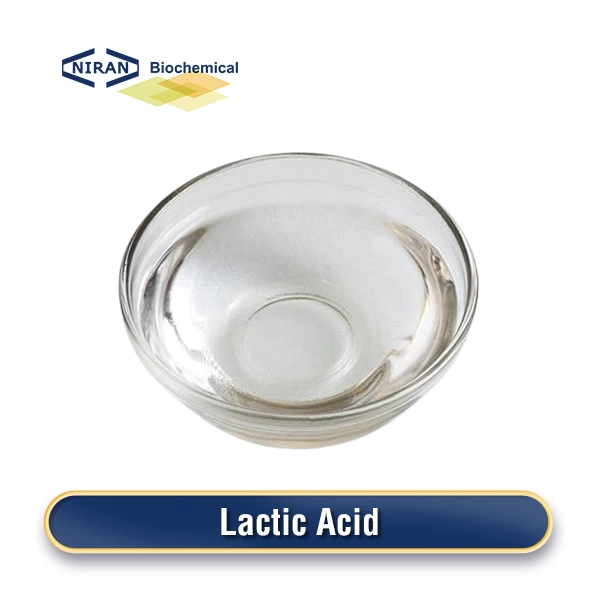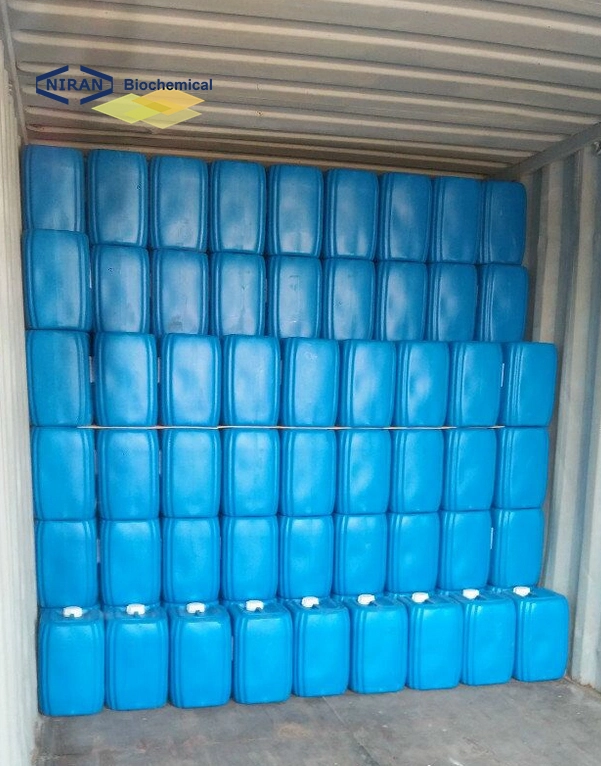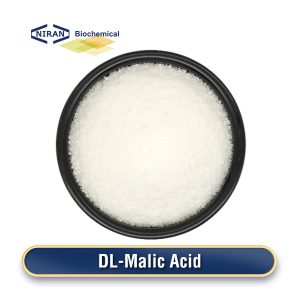Niran Biochemical
YOUR RELIABLE FOOD INGREDIENTS
Send Inquiry
Home » Products » Acidulants » L-Lactic Acid
L-Lactic Acid
- CAS: 79-33-4
- Chemical Formula: C3H6O3
- Certification: KOSHER, ISO, HALAL, FSSC22000, BRC, etc.
- Standard:
- MOQ: 5MT
- Shelf Life: 2 Years
Inquire Product
Product Description
What is L-Lactic acid?
L-Lactic acid is an optically active isomer of lactic acid. It is an organic acid refined through biological fermentation using corn starch as a raw material. The appearance is colorless, transparent, viscous liquid. With excellent biocompatibility due to its chirality, it is compatible with mammals, directly participating in human metabolism without side effects.
Widely applied in food, medicine, and other fields, L-lactic acid can be produced through either chemical synthesis or fermentation. The chemical synthesis method generally uses ethylene as a raw material and performs esterification and hydrolysis reactions in the presence of a catalyst; the fermentation method uses certain bacteria or fungi, such as L-Lactic acid bacteria or gibberellins, to convert starch or sugar into L-Lactic acid.
Related parameters:
| SENSORY SPECIFICATIONS | STANDARDS |
| Color | Colorless or light yellow liquid |
| Appearance | Transparent liquid |
| Smell | No exceptional smell or has special smell of L-Lactic Acid |
| Chroma (fresh) Hazen | Max. 50 |
| Chroma (after heating 200℃, 2h) Hazen | Max. 80 |
| PHYSICOCHEMICAL SPECIFICATIONS | |
| Identification test | Pass Test |
| Lactic acid content % w/w | ≥90 |
| L-Lactic acid content (in the total lactic acid) % L (+) | Min. 97.5 |
| Ignition residue % w/w | Max. 0.1 |
| Chloride ppm | Max. 20 |
| Sulphate ppm | Max. 50 |
| Iron ppm | Max.10 |
| Reducing Sugar | Pass Test |
| Citric acid, Oxalic acid, Tartaric acid, Phosphoric acid | PassTest |
| Carbonic commpound | Pass Test |
| Cyanide mg/kg | Max. 1 |
| Pb mg/kg | Max. 2.0 |
| As mg/kg | Max. 1.0 |
| CONCLUSION: | THE PRODUCT COMPLY WITH THE SPECIFICATION STANDARDS |
Recommended dosage
| Food Name | Maximum usage(g/kg) |
| Fruit juices | 0.1 – 0.3 g/kg |
| Soft drinks | 0.1 – 0.3 g/kg |
| Cakes and pastries | 0.1 – 0.3 g/kg |
| Biscuits and cookies | 0.1 – 0.3 g/kg |
| Yogurt | 0.2 – 0.4 g/kg |
| Cheese | 0.1 – 0.3 g/kg |
| Sausages | 0.1 – 0.3 g/kg |
| Salad dressings | 0.1 – 0.3 g/kg |
| Vegetables | 0.1 – 0.3 g/kg |
| Fruits | 0.1 – 0.3 g/kg |
L-Lactic acid has a wide range of uses
1. L-lactic acid is mainly used as a sourness enhancer in food, providing sourness and adjusting the acid-base balance of food. It is often used in beverages, candies, seasonings and baked goods to enhance the layering of flavor.
2. L-lactic acid has natural antibacterial properties, which can inhibit the growth of certain bacteria, thereby extending the shelf life of food. It is widely used in canned foods, pickled foods and cooked foods to prevent food spoilage.
3. As a pH regulator, L-lactic acid can control the pH of food to meet the requirements of processing and storage. It is used in yogurt, dairy products, condiments, etc. to help maintain the stability and quality of the product.
4. L-lactic acid can affect the texture and taste of food, provide appropriate acidity, make the taste of food more delicate, and is used in baked goods, dairy products and jellies to improve the taste and structure of food.
5. L-lactic acid is used as a moisturizer and exfoliating ingredient in skin care products to help improve skin texture and brightness, and in skin care products and cosmetics such as exfoliating creams, facial masks and moisturizing lotions to improve skin health and appearance.
User asked question:
Q: What should be paid attention to when transporting or packaging L-Lactic acid?
A: L-Lactic acid for edible use is packed in plastic barrels meant for pharmaceutical reagents, sealed, and stored in accordance with standard chemical regulations.
Q: Can L-Lactic acid really lighten dark spots?
A: L-Lactic acid is a water-soluble organic acid that has multiple functions such as moisturizing, anti-oxidation, and exfoliation. It also inhibits melanin formation, reduces spots and chloasma, and exhibits a whitening effect.



